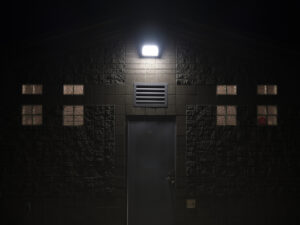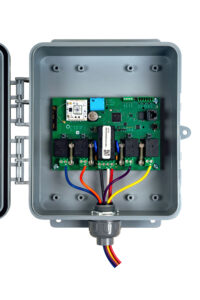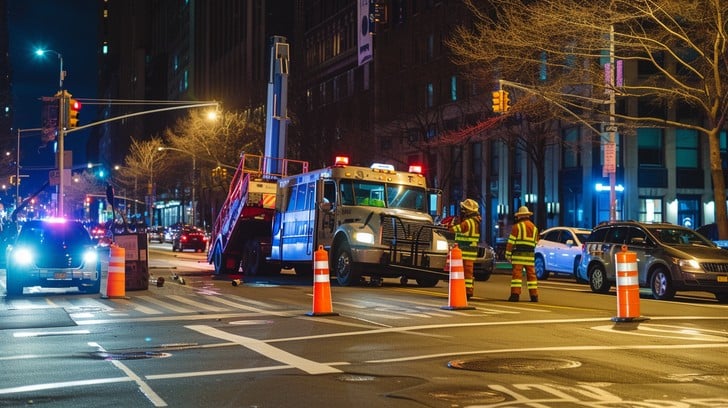When emergencies strike, time becomes our most valuable resource. Adaptable outdoor lighting systems offer a way to enhance safety and visibility, creating secure environments during critical moments. Whether guiding evacuees to safety or aiding emergency crews, these innovative lighting solutions are a game-changer in disaster response. With the right strategies, public spaces can prioritize lighting designs that bolster safety and resilience.
The Role of Outdoor Lighting in Emergency and Disaster Response
Lighting as a Critical Safety Feature
Outdoor lighting plays a crucial role in ensuring safety during emergencies.
Well-designed safety lighting systems provide emergency visibility for responders, allowing them to work efficiently while offering the public a sense of security. Imagine a park suddenly losing power during an emergency. Without proper lighting, confusion and chaos would dominate. Adaptable systems can prevent this by delivering reliable illumination that enhances safety across public spaces.
Guiding and Directing Public Movement
During emergencies, lighting isn’t just about visibility—it’s about guiding people out of harm’s way. Evacuation lighting systems help lead individuals to safe zones, whether they’re in parks, campuses, or other high-traffic public areas.
Key features of evacuation lighting include:
- Highlighting evacuation routes with bright, well-placed lights.
- Dimming non-essential areas to focus attention on safe pathways.
- Using directional lighting to reduce panic and promote orderly exits.
For example, during a crowded venue evacuation, well-lit exit routes can make all the difference, turning a potentially chaotic situation into a safe, controlled movement.
Key Features of Adaptable Lighting for Emergency Situations
Quick Activation and Intensity Adjustment
Emergencies and national disasters demand rapid responses. Emergency lighting control systems must activate immediately and adjust brightness to align with the situation. Bright light in critical areas can improve visibility for response teams, while dimmed lighting in non-essential zones helps conserve power resources.
Picture a downtown plaza turned into an emergency shelter. Bright lighting can illuminate triage areas, while nearby spaces remain dimmed to reduce distractions and save energy. This type of remote lighting management ensures that energy-efficient power is allocated where it’s needed most.
Remote Control and Real-TIme Monitoring
Swift, dynamic responses are necessary to manage unpredictable situations. Remote lighting management allows operators to make real-time adjustments without being on-site in potentially hazardous situations.
For example, if a storm causes flooding in recreational areas, operators can instantly activate light fixtures to assist rescue efforts. Real-time monitoring ensures that lighting continues to adapt to evolving conditions, offering a seamless response to emergencies and recovery efforts.
Types of Emergencies Where Adaptable Outdoor Lighting Can Make a Difference
Adaptable lighting isn’t a one-size-fits-all tool; its flexibility makes it effective during various emergencies.
- Natural Disasters – From earthquakes to hurricanes, natural disasters create dangerous conditions that demand dependable lighting solutions. Natural disaster lighting systems must endure harsh weather conditions and remain operational during power outages. Their continuous illumination supports rescue teams and provides evacuees with clear pathways, reducing chaos during critical moments.
- Public Safety Incidents – Civil unrest, accidents, or criminal activities can quickly make public spaces unsafe. Public safety lighting helps illuminate high-risk areas for law enforcement in their response efforts while guiding the public away from danger. Adaptable lighting ensures that even in chaotic situations, safety takes priority.
- Medical Emergencies and Evacuations – Large public spaces like parks and campuses can become hubs for medical emergencies. Emergency evacuation lighting highlights triage zones and assists medical personnel in identifying key areas. By improving visibility and guiding crowds, adaptable lighting ensures that medical teams can work efficiently and public safety is maintained.
Best Practices for Implementing Emergency-Ready Lighting Systems in Public Spaces
- Designing Lighting Zones and Safe Pathways: Create distinct zones to guide people during emergencies. Prioritize evacuation routes, gathering points, pathway lights, and safety lighting for clear navigation and situational awareness.
- Battery Backup and Power Resilience: Use backup systems like batteries or solar light options to keep emergency lighting functional during power outages.
- Regular Testing and Maintenance for Reliability: Test battery backups, perform routine checks, and use self-diagnostics to ensure lighting systems are always reliable.
How Outdoorlink Smart Controllers Enhance Emergency Lighting Adaptability

Remote Activation and Real-TIme Adjustments
Outdoorlink Smart Controllers take emergency lighting control to the next level by enabling remote adjustments. Facility managers can monitor systems and make changes instantly to adapt lighting during critical moments of response and recovery. With smart lighting control, proper outdoor area illumination is just a few clicks away.
Energy Management and Power Conservation
These controllers provide intelligent power management, ensuring energy resources are preserved during prolonged emergencies. Non-critical areas can be dimmed to save battery life, while high-priority zones remain brightly lit. This level of emergency lighting response ensures efficiency without compromising safety.
Automatic Alerts and Proactive Diagnostics
With the Outdoorlink Smart Controller, proactive diagnostics and automated alerts make it easier to address problems before they escalate. Operators receive notifications about system performance, allowing them to fix potential issues promptly. This proactive approach ensures that lighting systems are always ready for emergencies.
The Future of Emergency-Ready Outdoor Lighting Systems
Innovations in Solar and Backup Power
Advancements in solar-powered emergency lighting are paving the way for sustainable and resilient solutions. Solar-integrated systems combined with backup power options can reliably operate during extended outages. These innovations not only improve performance but also reduce environmental impact.
The Role of AI and Automation in Emergency Lighting
AI-driven lighting systems are transforming how we approach crisis response. Automated emergency response features allow systems to adapt autonomously to triggers like weather alerts or safety warnings. This ensures lighting is always optimized for real-time conditions, further improving public safety.
Adaptable types of outdoor lighting systems are essential for managing emergencies efficiently. From enhancing public safety to guiding evacuees and assisting responders, these solutions bring order to critical situations and your response program.
Are your public spaces equipped with the best emergency lighting solutions? With resilient outdoor lighting systems like Outdoorlink Smart Controllers, you can create safer environments and be prepared for the unexpected. Contact Outdoorlink today to explore advanced solutions for emergency-ready lighting.
